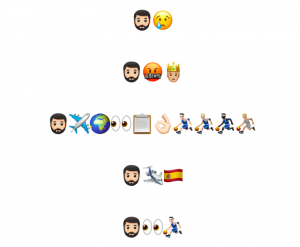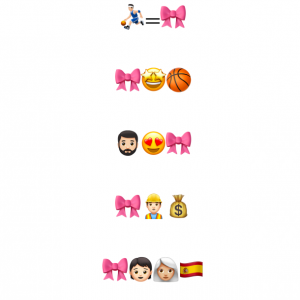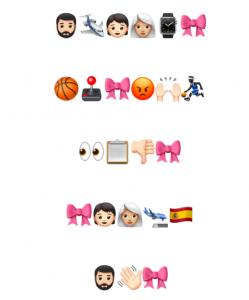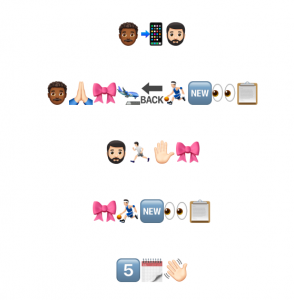Below is my emoji story for a popular Netflix movie. I had to screen shot it in chunks so it wouldn’t be blurry hence the different sized white boxes.







The idea of doing this task seemed super daunting at first however the process was extremely fun! I realized by the end that I had completed much more than the basic plot of the movie and really gave a complete play-by-play! I decided that it would be easiest to write up a plot summary using text and then work my way into emojis from there. I started with the title, this was actual one of the hardest parts. I struggled to find on singular emoji to represent the one word title. I ended up using two and deciding that the combo best portrayed the title in unison.
Throughout telling the emoji story, I focused more on key events. I found myself going off on tangents when I found an emoji that fit perfectly however found myself straying from the main events of the story. For example, one of the characters in the movie is Rex. When I realized there was this ???? I started trying to add him in more than necessary. In the end my story was long enough and that was the first thing to go during the editing process.
I wanted to make sure that I captured the story as best I could so that the reader could read a somewhat complete story on the other end. The representations of colour, race, gender were helpful when storytelling as well as the family portrayals of having a dad with his daughter.
What I really enjoyed about creating an emoji story like this is that I did not have to worry about punctuation or spelling or even making it flow nicely. It was all focused on the visual aspect of a story.
Bolter (2001) states that, “the relationship between popular films and novels is further proof that the visual is now regarded as primary” (p. 56). This is also the case for when students are just starting to learn how to read. In order to read, we must understand what the picture is describing before we are able to understand the meaning of the word. Therefore, I do believe that images come before the text. Bolter (2001) also points out that students who are young are able to “follow the story and become accustomed to the linearity of reading before [they] can actually decipher the letters that constitute alphabetic writing” (p. 54). With this task, the emojis allow us to make meaning of a story without using words by focussing on the visual aspect of storytelling. However, I found it difficult to ensure that my reader would read my image correctly. Is there a way that I can direct them to read my image the way I wanted them to? This was a cause for extra time being spent on selecting each emoji.
References:
Bolter, J. D. (2001). Chapter 4. Writing space: Computers, hypertext, and the remediation of print(2nd ed.). Mahwah, N.J: Lawrence Erlbaum Associates. doi:10.4324/9781410600110